- Home
- Thomas Keneally
A Commonwealth of Thieves Page 4
A Commonwealth of Thieves Read online
Page 4
A man in his twenties, Charles Peat, stood trial like young John Hudson for returning from transportation, a capital offence. The steward of the ship Mercury, the same ship Hudson had escaped from, recognised the prisoner as having been put on board the convict ship at Galleon's Reach, below Woolwich in the Thames. He had been found guilty of highway robbery and his death sentence had been commuted to transportation for life. He had been keen on his rights, and had argued with the ship's master about whether they were bound for Virginia or Nova Scotia. After the prisoners took over the ship on the morning of 8 April 1784, the steward said, “I had then the pleasure of wearing what the gentleman here call darbies [irons]; until Peat went ashore in Devonshire.”
A forthright young man, Peat told the court that he had served His Majesty in the Royal Navy and had had the honour of bearing a commission, but while serving time on one of Campbell's hulks in the Thames, “I had the mortification of seeing my fellow sufferers die daily, to the amount of 250.” He was found guilty of return and given for the second time in his life a sentence of death, but though that meant he had to spend time in the condemned ward of Newgate, amidst its lamentations, screams, songs, brawls, and riotousness, the sentence was in the end transmuted to transportation for life. Indeed, the better part of one hundred prisoners on what would become known as the First Fleet were guilty of having returned from transportation.
Negroes, emancipated slaves, were to join Phillip's fleet too—ten of them. John Martin had stolen cloth coats, breeches, waistcoats, a petticoat, and a cotton gown from a dwelling house where he may have been a servant. The son of the house saw Martin decamping with the stuff. The jury valued the theft at 39 shillings, below the capital punishment threshold of 40 shillings, perhaps in an attempt to save Martin the gallows. Martin's court appearance took all of ten minutes.
Britain was, through its institutions, telling all such people, and more, to be gone.
three
CONSIDERABLE MARITIME EXPERTISE was applied to save Britain from epidemic petty crime. Lord Howe at the Admiralty had written to Lord Sydney at the Home Office on 3 September 1786: “I cannot say the little knowledge I have of Captain Phillip would have led me to select him for a service of this complicated nature.” But Sydney liked and admired professional officers like Phillip, whom he rightly considered the journeymen of Empire. And then, this was a completely novel enterprise for the Crown, an unprecedented penal and society-making experiment. Being commodore not of two or three but of a flotilla of eleven ships, as well as captain-general of vast and unvisited territories, and gaoler-in-chief in the netherworld, was a massive role for which normal naval service could only dimly prepare anyone. Even so, Phillip—this obscurely gifted, secretive, and earnest man—was, as he had been all his life, anxious for employment, and harboured enough respect for his own gifts to take on the immediate challenge offered by a convict fleet.
Arthur Phillip began his seafaring apprenticeship in 1753 in the squalid, grease-laden, profane atmosphere of the whaler Fortune, a 210ton vessel built for the Greenland whale fishery. In winter, Fortune travelled to the Mediterranean to take part in the trade in herrings and oranges. But just after Phillip's seventeenth birthday, war was declared between France and Britain. During the conflict, later to be called the Seven Years' War, he experienced the violence of cannonry in an inconclusive battle to save the British-garrisoned island of Minorca. Later, as a young officer off Havana in 1761, he survived both Spanish artillery and a wet season which, with its armoury of malaria, yellow fever, cholera, and the usual typhus fevers spread by lice and rats, killed 7,000 sailors and soldiers.
These experiences all prepared Phillip for further elevation within the officer class. It was just as well, since he lacked powerful connections. His character in his early twenties combined a dry humour with reserve, efficiency, and intellectual hunger. To temper a tendency to be authoritarian, he possessed common sense, was not fast to anger, and lacked the raucousness and rambunctiousness of other sailors.
On 19 July 1763, Lieutenant Phillip married Margaret Denison, the widow of a glove and wine merchant and fifteen to sixteen years older than he was. In separate portraits painted about then, he appears as a florid, cultivated-looking young man, and she a conventionally handsome woman with rather birdlike eyes. Whatever Arthur Phillip's sexual tendencies, he does not seem to have been a young man aflame with passion. The couple lived in Hampton Court for two years, but then went to rusticate at Lyndhurst in the New Forest in Dorset, on Margaret's estate of 22 acres, named Vernals. Phillip ran their property as a dairy farm, kept horses, and grew fruit and vegetables. But after a number of severe winters in the country, “some circumstances occurred” which led to a formal indenture of separation, signed by the couple in April 1769. It stated that they had “lately lived separate and apart.”
Phillip began to spend time in France as an agent—or spy—for the Home Office or Admiralty. With his gift for languages and his German colouration he was good at his work, but it was an ungrateful business and Phillip felt he needed to accelerate his naval career.
The Portuguese Secretary of State for Marine Affairs and the Colonies approached Admiral Augustus Hervey asking for help in a fight with Spain on the Atlantic coast of South America. A disputed area known as the Debatable Lands ran northward from the estuary of the River Plate, and was claimed both by Portuguese Brazil and Spanish Argentina. As token of their claim, the Portuguese had created their own colony at the Plate, across the estuary from Buenos Aires and west of Montevideo, and named it Colonia do Sacramento. They needed an experienced captain to help them defend it. Hervey recommended Lieutenant Phillip to his Portuguese friends. In Lisbon, Phillip oversaw the business of fitting out his command, the Nossa Senhora de Belém, on the banks of the Tagus River, and quickly added Portuguese to the French and German he could already speak.
Phillip got on well with the Portuguese Viceroy in Rio de Janeiro, Marquis de Lavradio, and fought effectively against the Spanish. Lavradio had already reported to the Portuguese court that Phillip's health was delicate but that he never complained, “except when he had nothing special to do for the Royal Service.” It was true that many of Phillip's illnesses were associated with a kind of ardent waiting for action to occur, or else with circumstances in which he conducted dangerous work out of the direct gaze of the Admiralty. Ambition was his most restless appetite. Lavradio's opinion of him gives one of the most extended discourses on his character that we have: “One of the officers of the most distinct merit that the Queen has in her service in the Navy…. As regards his disposition, he is some what distressful; but as he is an officer of education and principle, he gives way to reason, and does not, before doing so, fall into those exaggerated and unbearable excesses of temper which the majority of his fellow countrymen do … an officer of great truth and very brave; and is no flatterer, saying what he thinks, but without temper or want of respect.” Phillip emerged from the Spanish-Portuguese War as a markedly solitary and self-sufficient man, awaiting only public recognition to complete him.
In 1779, the Treaty of San Ildefonso made the Debatable Lands largely Spanish. Phillip resigned his now futile Portuguese commission to seek fresh employment in the Royal Navy fighting the American War. After a stint as commander of a fireship, in 1781 the Admiralty at last gave him a better command, the frigate Ariadne. But in the river Elbe, when he was escorting transports of Hanoverian recruits for the British army, the onset of river ice forced him ingloriously to run his vessel into the mud of the Hamburg harbourside. It was not until the end of the following March that the Ariadne was able to leave.
During these frustrating months, Phillip placed great reliance in Lieutenant Philip Gidley King, a sturdy young man of undistinguished background, a draper's son who served him not only in the Ariadne, but also in his later command, the Europe, and eventually in the great convict fleet. When that same year the Admiralty appointed Phillip captain of the Europe, a sixty-four-gun, 600-man battl
eship, he was at last commander of a ship of the British battle line. He took Lieutenant Philip Gidley King aboard with him, and his clerk, a most eccentric man named Harry Brewer.
The American bosun on Europe, Edward Spain, would later write an ironic memoir of his time serving with Phillip, and of the relationship between Phillip and Harry Brewer. Brewer was an unmarried seaman of no particular rank, or else he could be counted at more than fifty years of age as the oldest midshipman in the Royal Navy. Brewer had for some years skillfully copied Phillip's diaries and journals for him, and worked up his watch lists and quarter bills. But Spain did not quite approve of the association between Harry and Arthur Phillip, remarking mysteriously that “our captain was at that time in slender circumstances … and as they both [Phillip and Brewer] rowed in the one boat, no doubt they had their own reasons for wishing to make the voyage together.” Whatever else “they both rowed in the one boat” might have meant, Spain certainly implied they were short of cash.
Bosun Spain was rather fascinated with Harry. He had some gift for architecture, said Spain, “was bred a house carpenter, he was clerk at some great concern in the building line.” His coarse features and contracted brow “bespoke him a man sour'd by disappointment.” Harry usually wore a rough-textured blue coat, a wool hat “cocked with three sixpenny nails, a tolerable waistcoat, a pair of corduroy breeches, a purser's shirt not of the cleanest.”
At Cape Verde Islands, said Spain, Phillip “was perfectly at home for he spoke Portuguese fluent and could shrug his shoulders with the best of them.” Spain would give us an insight into the only sexual infatuation
Phillip would ever be accused of. The Europe put into the mid-Atlantic island of St. Helena, found four British sailors and their women stranded there, and allowed them to travel on board. “But don't imagine that it was out of any partiality to any of them, except one, which one he had a sneaking kindness for and had he given permission to her alone the reason would have been obvious to the officers and the ship's company.” Her name was Deborah Brooks and Phillip's association with her would run a considerable time. She had eloped from England with a ship's bosun, Thomas Brooks, and for whatever reason they and the other sailors and women had turned up on St. Helena, waiting to be employed on a passing British ship. Spain seemed to see Thomas Brooks as a threat, and believed Phillip was trying to get rid of him, and to put Deborah's husband in his place. Deborah Brooks and her husband would also join Phillip on his ultimate journey to penal New South Wales.
During his naval career Phillip had got to know Evan Nepean, a Cornish ship's purser aboard the Victory in 1779–80. The son of a Plymouth shipwright, in 1782 Nepean found himself by raw talent elevated to Undersecretary of State in the Home Office. Nepean was responsible not only for prisons, but for espionage in France and Spain. It was as one of Evan Nepean's spies in the 1780s that Arthur Phillip, after his return from Madras on Europe, became known to Lord Sydney. Though Britain was not at war with France, something like a cold war persisted between the two nations. Late in 1784 Nepean called on Phillip to journey to Toulon and other ports “for the purpose of ascertaining the naval force, and stores in the arsenals.”
In some roundabout way, this secret service, combined with Phillip's record as a “discreet officer,” a captain in both the Royal Navy and for the Portuguese, could explain why the Admiralty and Home Office thought him adaptable enough to be the first governor of Britain's convict-colony-to-be. Phillip does not seem to have hesitated in accepting this appointment, even though many officers might have thought it potentially dangerous and unrewarding to voyage with a mass of felons to the far side of the globe.
The document that set out the raison d'ëtre for the penal experiment, The Heads of a Plan, was prepared for the Lord Commissioners of the Treasury and others in Whitehall by Evan Nepean. It concentrated on the business of transportation to New South Wales rather than on any commercial benefit arising from the new place. New South Wales, it declared, was “a country which, by the fertility and salubrity of the climate, connected with the remoteness of its situation (from whence it is hardly possible for persons to return without permission), seems peculiarly adapted.” The Heads dealt with the process of transportation, the taking on board of two companies of marines to form a military establishment, the provision of rations, and the collection of supplies and livestock en route at Rio and the Cape of Good Hope. Towards the end of this Plan, Nepean raised the issue of financial and strategic benefits which might arise from the New Zealand flax plant and the tall trees on Norfolk Island, an island Cook had discovered a thousand miles out in the Pacific from Botany Bay, where a proportion of the convicts were to be settled. And since timbers for masts and flax for sails were essential to a naval power, the idea that they might be supplied from the South Pacific would have appealed to Treasury and Admiralty officials. “Considerable advantage will arise from the cultivation of the New Zealand hemp or flax plant in the new intended settlement, the supply of which would be of great consequence to us as a naval power.”
Was this commercial thought tacked onto the penal plan, or was it the real purpose of the whole operation? It doesn't seem likely. The document declares itself at its opening sentence: “Heads of a plan for effectually disposing of convicts.” And if the proposed penal settlement in the southwest Pacific were to become a trading post, it would violate the chartered monopoly of the East India Company, and upset the company's trade with Canton and in India. The East India Company's principal, Francis Baring, would quite early complain of “the serpent we are nursing at Botany Bay.”
It seemed that His Majesty's government desired New South Wales far more as a prison than as a great port, or as an opening for British trade. Phillip was thus, in the strictest penal sense, to be a governor, and not an apostle of British commerce.
four
ONLY ONE BRITISH SHIP, the HMS Endeavour, captained by a maritime prodigy, James Cook, had spent time on the distant coast of New South Wales, in 1770. Now, under the vulgar urgings of domestic politics, Prime Minister Pitt and Lord Sydney of the Home Office were sending a reputable but not glittering fellow in command of many vessels stocked not with naturalists and artists but with Britain's sinners.
In his little office at the Admiralty, Phillip worked with his clerk, the unkempt Harry Brewer, and as if to focus his mind, wrote a cultivated and informed document which represented his philosophy of convict transportation and penal settlement. Not as a visionary, but merely as someone acknowledging the state of British law, he wrote: “The laws of this country will, of course, be introduced in New South Wales, and there is one that I would wish to take place from the moment His Majesty's forces take possession of the country—that there can be no slavery in a free land and consequently no slaves.”
His determination that convicts not be seen as a slave caste would have important results for many of the felons marked down for his transports. For one thing, he had respect for their right to as safe and healthy a journey as he could provide. But he did not see their status as fully equal to that of the free. “As I would not wish convicts to lay the foundation of an Empire, I think they should ever remain separated from the garrison and other settlers that may come from Europe.”
Through secret caresses between free men and convict women, and other alliances forged on his ships, this would become a proposition already in doubt before the ships even sailed.
The Cabinet and the King made their decisions and signed off on them. The early sight of convict vessels disappearing down the Thames estuary with sails set was the chief point for the Home Office, not how they fared from the instant of disappearance onwards.
The successful tenderer for the overall contract for the fleet was William Richards Jr., a prominent ship-broker of south London. There is a legend that contractors dumped their worst produce on Phillip, knowing he could not very conveniently complain. But two reliable young officers of marines, Watkin Tench and David Collins, no strangers to salt rations, would
both independently agree that the provisions on the First Fleet provided by Richards were “of a much superior quality to those usually supplied by contract.” We have no similar enthusiastic endorsement from any convict, though the low death rate during the flotilla's months of voyaging suggests that Phillip, when visiting the vessels down the Thames at Deptford, and Richards himself must have been careful during their inspections of barrels of salt beef and pork and flour.
He inspected and chartered five merchant vessels as transports—the Alexander, Charlotte, Friendship, the newly built Lady Penrhyn and Scarborough—and three store ships: Borrowdale, Fishburn, and Golden Grove. His contracts with the ship-owners detailed the form of accommodation, rations, cooking equipment, bedding, fetters, ventilation equipment, and so on to be supplied for the convicts, and the medicines and medical preventives to be aboard. Ultimately, as the numbers loaded aboard grew, Richards would need to contract for a sixth convict transport, Prince of Wales. The transports were all relatively young vessels but not purpose-built prison ships, and they all needed to be specially fitted out by carpenters at the Deptford dockyard in order to receive prisoners on their normal cargo decks. All were three-masted and over 300 tons, except the Friendship, a two-masted vessel of 278 tons generally described as either a brig or a snow.
For Richards and the individual ship-owners the cream from this expedition would come after the ships finished the business of taking the convicts into the void. Some hoped to receive further charter from the East India Company, authorising them to journey to China to load tea. Richards depended on Lord Sydney to apply pressure to the East India Company directors, who exercised monopoly over east Asian trade, but ultimately they would take up only three ships, Charlotte, Scarborough, and Lady Penrhyn, to bring a cargo of tea home from China.

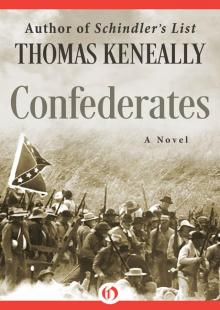 Confederates
Confederates Flying Hero Class
Flying Hero Class Gossip From the Forest
Gossip From the Forest Schindler's List
Schindler's List Bring Larks and Heroes
Bring Larks and Heroes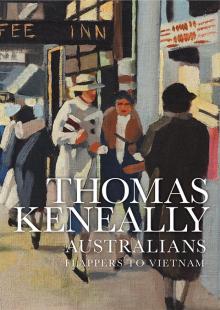 Australians: Flappers to Vietnam
Australians: Flappers to Vietnam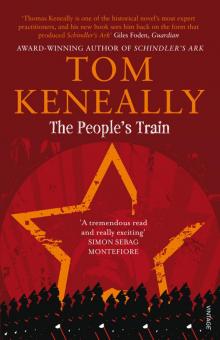 The People's Train
The People's Train Crimes of the Father
Crimes of the Father A Family Madness
A Family Madness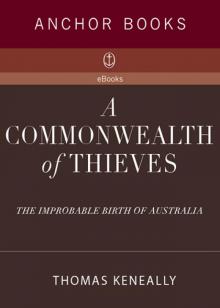 A Commonwealth of Thieves
A Commonwealth of Thieves Ned Kelly and the City of Bees
Ned Kelly and the City of Bees A River Town
A River Town Bettany's Book
Bettany's Book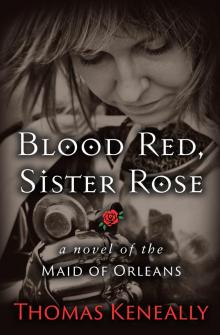 Blood Red, Sister Rose: A Novel of the Maid of Orleans
Blood Red, Sister Rose: A Novel of the Maid of Orleans Victim of the Aurora
Victim of the Aurora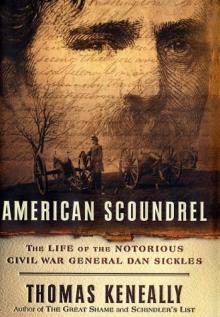 American Scoundrel American Scoundrel American Scoundrel
American Scoundrel American Scoundrel American Scoundrel Three Cheers for the Paraclete
Three Cheers for the Paraclete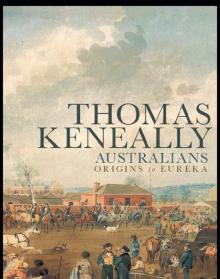 Australians: Origins to Eureka: 1
Australians: Origins to Eureka: 1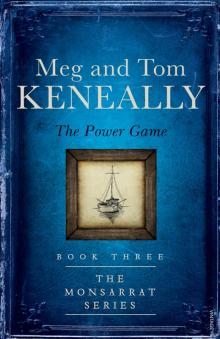 The Power Game
The Power Game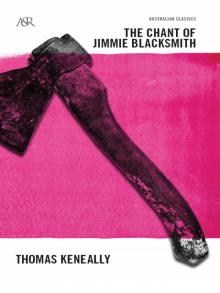 The Chant Of Jimmie Blacksmith
The Chant Of Jimmie Blacksmith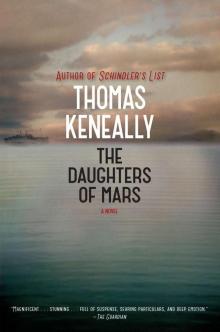 The Daughters of Mars
The Daughters of Mars Searching for Schindler
Searching for Schindler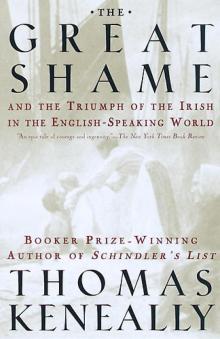 The Great Shame: And the Triumph of the Irish in the English-Speaking World
The Great Shame: And the Triumph of the Irish in the English-Speaking World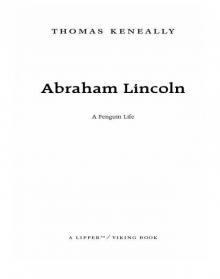 Abraham Lincoln
Abraham Lincoln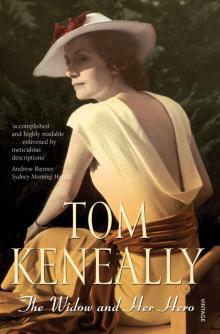 The Widow and Her Hero
The Widow and Her Hero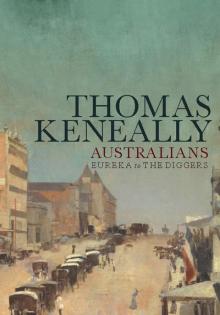 Eureka to the Diggers
Eureka to the Diggers Shame and the Captives
Shame and the Captives The Survivor
The Survivor Jacko: The Great Intruder
Jacko: The Great Intruder The Book of Science and Antiquities
The Book of Science and Antiquities Homebush Boy
Homebush Boy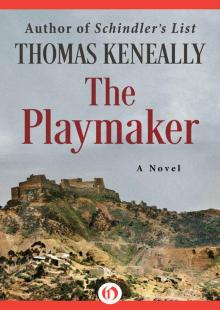 The Playmaker
The Playmaker To Asmara: A Novel of Africa
To Asmara: A Novel of Africa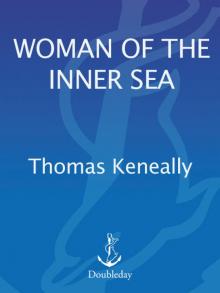 A Woman of the Inner Sea
A Woman of the Inner Sea The Tyrant's Novel
The Tyrant's Novel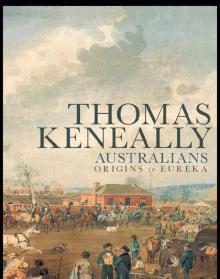 Australians
Australians Schindler's Ark
Schindler's Ark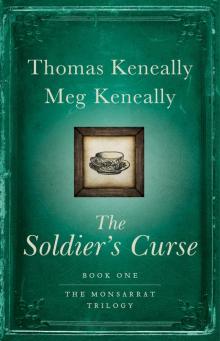 The Soldier's Curse
The Soldier's Curse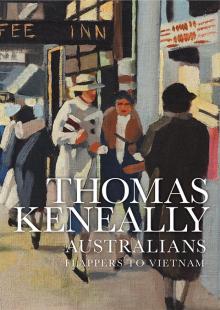 Australians, Volume 3
Australians, Volume 3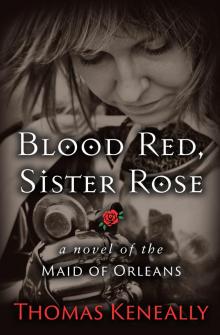 Blood Red, Sister Rose
Blood Red, Sister Rose A Victim of the Aurora
A Victim of the Aurora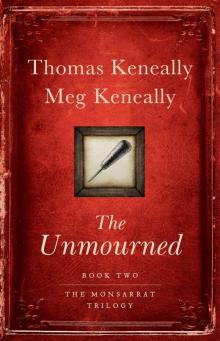 The Unmourned
The Unmourned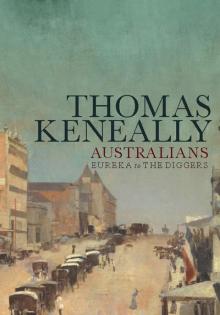 Australians, Volume 2
Australians, Volume 2 To Asmara
To Asmara